EPs vs. LPs: Decoding The Difference And Maximizing Your Release Strategy

The music industry is constantly changing, and digital distribution and streaming have emerged as the dominant channels for discovering and enjoying music. Yet, the allure of these platforms often prompts eager listeners to desire more than just individual songs. Consequently, many artists and bands are contemplating the release of Extended Play (EP) or Long Play (LP) records to satisfy the cravings of their expanding fan base.
EPs and LPs, when crafted thoughtfully, go beyond being mere collections of songs. They serve as artistic statements, coherent concepts, and time capsules that capture an artist’s essence and their place in a particular era—something that a single song alone cannot achieve.
But what sets an EP apart from an album, and which format should you choose for your next release? Let’s dive deeper into the nuances and explore the factors that play a crucial role in this decision-making process.

Fundamental Differences
When comparing an EP and an album (LP), the key distinctions boil down to two factors:
- Number of songs
- Length
While these aspects provide a basic differentiation, several other considerations come into play when determining which format is best suited for your musical ambitions. These include your reason for releasing a record, the number of songs you have prepared, your position in your music career, and your existing catalog of releases.
Song Count
When distinguishing between an EP and an LP, the primary disparity lies in the song count. While perspectives may differ, an EP generally encompasses 4–6 songs, which is widely regarded as the optimal length.
On the other hand, an LP can encompass a broader range of 8 to 15 songs or even more, particularly in the case of a double album. Nevertheless, it’s crucial to recognize that these figures are not fixed and can be flexible based on factors like genre, song length, and artistic vision.
Program Duration
The length of the program is directly tied to the number of songs and contributes to the distinction between an EP and an album. In culinary terms, an EP can be likened to an appetizer—it offers more than just a bite (single), but it serves as a lighter fare compared to a full entrée (LP).
An EP provides a concise listening experience that captivates the audience without demanding an extensive time commitment. On the other hand, an album offers a more immersive and substantial musical journey, delving deeper into the artist’s creative landscape.
EP vs. Album: A Matter of Alignment with Your Goals
The decision between releasing an EP or an album becomes more intriguing when considering your music goals, target audience, marketing strategy, and the quality of the songs you have available.
Budget Considerations: Making Sound Financial Choices
When it comes to budget considerations, the cost of producing CDs or vinyl records remains relatively consistent between EPs and albums. It’s important to analyze the specific requirements of your project. Choosing economic CD packaging options, such as jackets, may be more suitable for an EP release, potentially saving you money.
Recording, mixing, and mastering costs can significantly impact your budget. For instance, a smaller number of songs on an EP would typically require less studio time, resulting in lower overall expenses. Considering these financial aspects while aligning them with your artistic vision is crucial for making informed decisions.
Target Audience
Your target audience plays a vital role in determining the ideal format for your release. Factors such as your current music career stage, music goals, and fanbase size can influence your decision. A newly formed band seeking to build an audience may target a different demographic than an established band with a loyal following.
Understanding your specific audience’s expectations and tailoring your release accordingly increases the chances of resonating with your listeners and attracting new ones. Crafting your release strategy to align with their preferences can yield fruitful results.
Music Goals: Paving Your Path with Purpose
Your music goals should always guide your decision-making process, including the choice between an EP and an album. If you’re a rising rap artist eager to introduce your original tracks to the world, an EP can be an excellent starting point. It allows you to familiarize yourself with the recording and release process while giving fans and potential followers a taste of your artistry.
In contrast, an established rock band that regularly performs live might consider releasing a new LP on CD with premium packaging. This not only offers fans a high-end merchandise option but also signifies growth and progression in your musical journey.
Ultimately, your goals, be they experimental, commercial, or personal, should be the driving force behind your chosen format and release strategy.
Power of EPs
EPs hold immense potential in captivating listeners and building a dedicated fanbase. In today’s music landscape, singles dominate the release scene, primarily driven by streaming platforms, downloads, and playlists. Once you capture the attention of a listener, an EP provides an ideal platform for them to delve deeper into your musical universe.
Serving as valuable tools for music discovery, EPs enable you to expand your mailing list and keep fans informed about upcoming gigs and releases, solidifying your relationship with them. A free EP download in exchange for a fan’s name and email address, can leverage streaming plays and direct engagement to monetize the connection.
Setting Free Your Best Material When It’s Time
As a general rule, it’s essential to have a discerning eye when choosing which songs to release. A producer once remarked that for every four songs a band writes, only one is truly ready for recording and release. While this guideline may seem stringent, it serves as a reminder to offer only your best material to your fans.
If you find yourself with a surplus of songs, perhaps 12 in total, an EP might be the most appropriate format. Demolish them all, select the six most compelling tracks, and develop a strategic release plan, launching four of the songs as singles—one per month—leading up to the EP’s release, accompanied by two additional tracks to entice everyone who has been following your four-month campaign.
The Mini Concept Album’s Creative Potential
EPs unlock a realm of creativity that LPs may not be ideally suited for. Their shorter length makes it easier to craft a cohesive idea or theme, allowing you to experiment and explore various artistic avenues. Whether it’s a quick shot of cover tunes that influenced you, a foray into a different genre, or an entirely acoustic venture, EPs provide a canvas for artistic exploration and innovation.
Building Anticipation With A Release Schedule
When planning an EP or LP release, numerous approaches can be effective. One effective strategy is to build anticipation by teasing the release of your major work through monthly single and video releases. This method helps generate momentum, collect email addresses, populate your YouTube channel, and consistently promote fresh content. As the grand culmination, offer the entire EP in a Digipak or Jewel Case, amplifying the impact of your larger-scale promotion.
Promoting New EPs Using Best-of Outtakes
Another intriguing concept is creating a best-of or “favorites” EP from a series of LPs. For instance, if you’re on the cusp of releasing your fourth LP, consider promoting it by assembling an EP sampler in an Eco-Wallet, featuring two tracks from each of your previous releases. This exclusive EP can incentivize fans to join your mailing list or serve as a complimentary gift with any merchandise purchase. Consider recording it live, incorporating tracks from your previous albums to entice even your most devoted supporters who already own your entire discography.
When deciding between an EP and an album, there are several factors to take into account. EPs are great at engaging listeners, reaching new audiences, and utilizing music discovery platforms. On the contrary, albums offer the opportunity for in-depth artistic exploration and present a unified artistic statement. By aligning your objectives with the chosen format and creating a well-thought-out release strategy, you can make a lasting impression on your audience. For additional tips and updates, visit the MPT Agency Blog. Stay connected with MusicPromoToday for a competitive edge that sets you apart from the rest.
Subscribe To Our Music Marketing Newsletter!
News about music marketing strategies to the music business and beyond.
Delivered to your inbox once a week.




